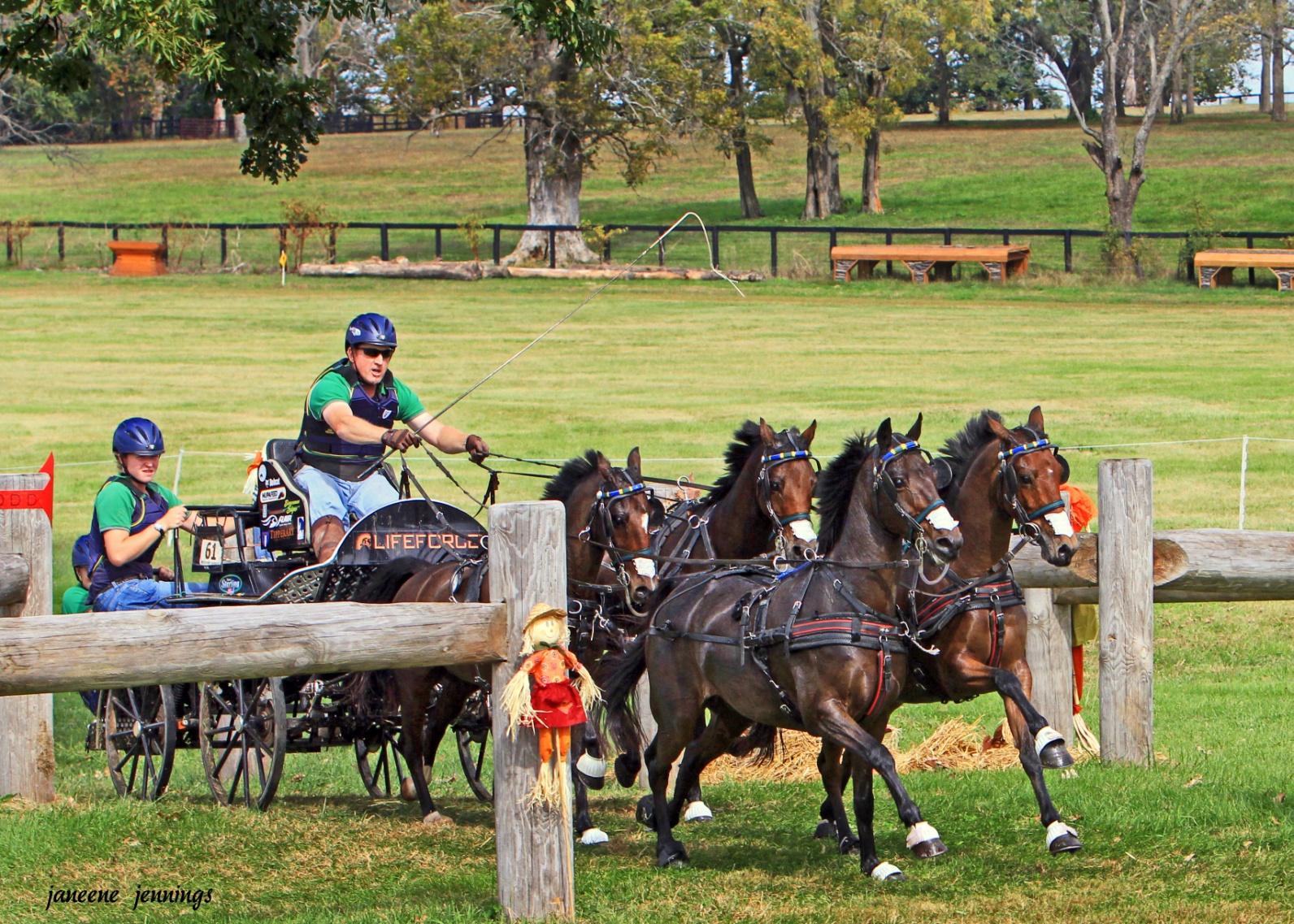Selecting a Saddlebred Sport Horse
by Julie Lynn Andrew
The process of selecting an American Saddlebred Sport Horse may at first seem labyrinthine: where do I find what I am looking for ? How do I know when I find it ? Since American Saddlebred Show Horse prospects are not ordinarily presented in the manner that Sport horse prospects of warmblood derivation are, it can be confusing. First some simple considerations.
- You are looking for an INDIVIDUAL! Not everyone can work with every horse. Unlike Show horses, most Sport horse enthusiasts do not ride with trainer supervision the majority of the time. Sport horse buyers what YOU like and can live with.
- AVOID ABSOLUTES!: if someone tells you that particular bloodlines must be avoided, or are the only ones to look at, run ! Prejudices of all kinds have made for keeping the Saddlebred a secret in the Sporthorse arena for too long.
- Buy the best mover you can get along with and afford. Pretty is very nice, also: there is an old adage ” looking ain’t doing ” – this precept is one that I love to see our Saddlebreds blow to pieces. You can have it ALL, but it isn?t always affordable. First buy what you can work with; riding, jumping, or driving.
- Conformation and Soundness: LOOK at the engine and the steering- does this horse have the kind of angles in his hocks that will facilitate giving him the power to do what you want to do, without weakness. Does his neck come out of his shoulder high enough- a ” double hinge ” in the form of an “S” may be great for a walk-trot horse, but you will be starting with a disadvantage in Sport horse types of work. A weak loin coupling, and front legs coming out the same hole are not conformation points which easily lend themselves to disciplines of any kind. However, refer to #1.
- Athletes are born, but GREAT athletes are made: in the wrong hands, even a horse with phenomenal potential can become average or less. BUT, families which have a history of producing World Champions are most likely to provide you with a good thinking, athletically inclined Sport horse prospect as they are the next Five Gaited Worlds’ Grand Champion. Remember: most knowledgeable breeders will tell you the mare is responsible for as much as 70% of your future champion. A bit of research is definitely worth your time. The Saddlebred genepool is as much, or more, phenotypically prepotent than any other breed out there.
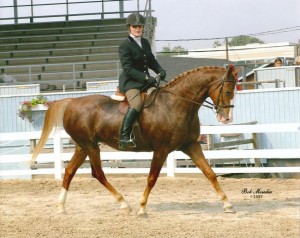
Alright, now lets look at movement. For Dressage, Eventing, and Competitive Driving, the movement of the horse is very important. Your horse may jump like a stag and run like a deer, but a flamboyant mover with a correct dressage test, who has the same requisites, will beat you every time. For Show Jumping, it is still Dressage to the ground pole, or base of the fence. However, movement is not judged. When you buy your Sporthorse prospect, you may not be thinking of being competitive, but why limit yourself for later, when you may change your mind. Learn to love talent, too.
WALK:
Acceptable: a clean, four beat walk without “paceyness.” The horse’s hind feet should land in the tracks of the front feet. This is called tracking up.
Even better: all of the above plus an “overtrack”: the horse’s hind feet tracks exceed those of the front feet, and the horse opens in his shoulder and lands with a softly suspended stride. Hard to find-but they are out there, and they are worth it.
TROT:
Acceptable: the horse moves forward in a free shouldered trot, head stretching forward (not up).
Even better: the horse shows the above, plus he is elastic in his back, and has suspension. The metronome in your head counts more slowly for a “longer” stride.
CANTER:
Acceptable: three beats, not “lateral”- the horse is driving from behind, and shows lightness in the forehand- he isn’t driving onto his front feet.
Even better: the horse shows “jump” in his canter- he is VERY light in front and almost appears to bound along, while being very balanced.
Ideally, the Sport horse buyer is looking for a horse that has been started under saddle, or at least in lines, but has not had his tail cut. Although in many cases, when left out of a set for an extended period of time, a horses tail will lay down again, a tail which has been set for a long while, or a poorly cut tail will be an obvious red flag in the competitive world. Once again, prejudices being what they are, ” when in Rome, do as the Romans do “. No other breed, participating in Sport horse disciplines competitively, cuts tails.
Where do you go to find your prospect. You’d be surprised by how receptive the top trainers have become. John T. and Nancy Trent Jones, owners of Rosemont Manor Farm, have a reputation for breeding, training and representing the finest in quality American Saddlebred Show Horses. Nancy comments, ” as Saddlebred breeders we realize that not all of our young horses will meet the requirements for the traditional show ring. Many of these horses do, however, have characteristics of athleticism, trainability, and conformation that suit them perfectly for the Sport horse divisions. The Sport horse market broadens our resources base, and as large breeders it affords the horses we raise a future in another discipline.” Nancy continues, “most importantly to me, these divisions offer a safe alternative to the sad possibility of abuse and slaughter many Saddlebreds face if they cannot find appropriate jobs.”
In the pictures, we show three very different individuals. The traits that they share include being very correct in their legs and feet, with excellent backs and loin couplings. They have broad chests and deep heart-girths, along with excellent angles in their hindquarters. What makes them different brings into play their bloodlines, as well as Mother Nature.
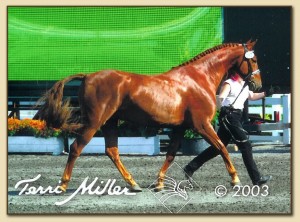
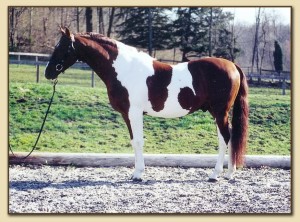
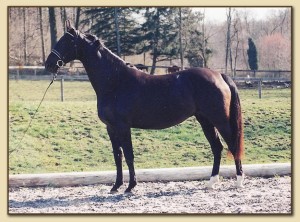
Melanie Sloyer, an owner of Saddlebreds and warmbloods, and the Chairman of the Breed Show at Dressage at Devon, the largest breeding show of its kind in the world offers the following comments, “These individuals, although of very different types, all have the correct movement, attitude, and conformation to become successful upper level dressage horses. The mare, in particular, is of a quality to hold her own against the best warmbloods in this country.”
The American Saddlebred is a ready, willing and able partner for any discipline. Sporthorse disciplines, Foxhunting, Polo, and ranch work are not beneath their vaunted status as the “Peacock of the Show Ring”. Take another look at that colt that just unfurled his legs this Spring- perhaps he really wants to grow up to dance across a dressage arena, or dig into a cross country course. He isn’t a step child; he is part of the new paradigm: an American Saddlebred who is recognized for excellence in EVERY division and discipline.
If you have comments, questions, or a story to tell, please feel free to contact me at bryndewinesfarm@aol.com — I’d love to hear from you. Many thanks to those of you who I’ve heard from already; your words of encouragement are tremendously appreciated !

